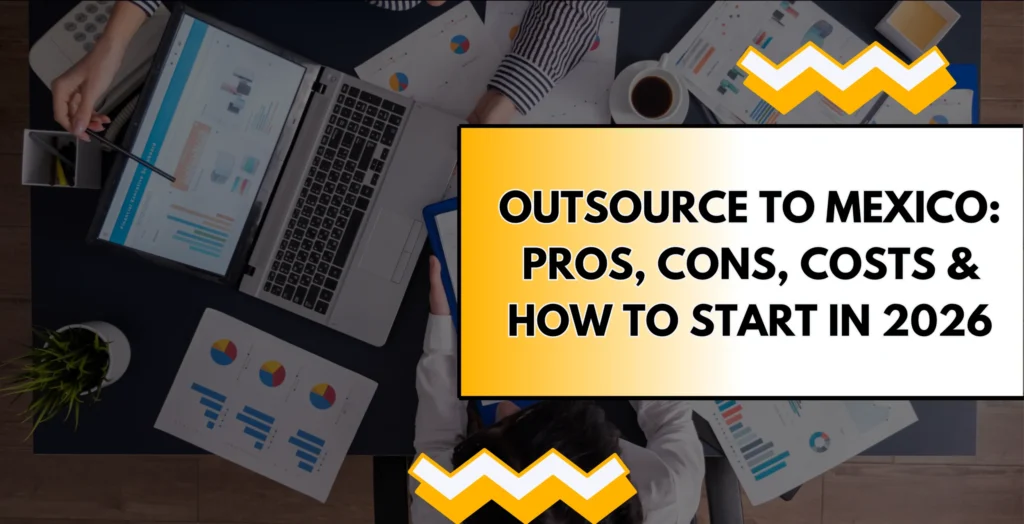🔑 Key Takeaways
- Cost to Hire: Salaries range from $3,000/month offshore to $9,000+/month in the US, depending on region and role. Learn more in the Data Analyst Salary Guide.
- Where to Hire: Offshore options like Latin America, Eastern Europe, and Asia offer vetted talent with strong English and time zone overlap. Not sure where to look? Compare top countries for offshore hiring.
- What to Look For: Strong SQL skills, business acumen, and communication. Skip the degree obsession—focus on alignment with your tools and KPIs. Use our [free JD templates].
- Testing & Interviews: Combine a take-home case + live SQL demo + stakeholder call. We’ve laid it all out in our interview flow and rubric
- Hiring Options:
→ Need long-term alignment? Go in-house.
→ Want speed and flexibility? Use a vendor.
→ Want vetted offshore analysts with transparent pricing? Talk to Talent Hackers.
Hiring a data analyst sounds simple—until you’re staring down 100 resumes that all say “SQL, Python, Excel.”
You need insights, not just dashboards. Business impact, not just reports. But finding someone who understands both your data and your business? That’s the hard part.
This guide is built for hiring managers, founders, and talent teams navigating exactly that challenge. Whether you’re hiring your first analyst or scaling a data team, this is your complete roadmap—from writing the right job description to choosing between onshore vs offshore talent, setting a fair salary, running a smart interview process, and deciding whether to hire in-house or through a vendor.
Everything here is grounded in real hiring flows, cost data, and proven evaluation methods—plus you’ll get links to ready-to-use templates, country-by-country rate comparisons, and compliance insights that save you months of trial and error.
What Does a Data Analyst Actually Do?
At its core, a data analyst helps teams make smarter decisions using structured data. That means pulling information from tools like CRMs, product databases, or financial systems—and turning it into actionable insights.
But not all data analysts do the same thing.
Common Responsibilities
Most data analysts work across four main areas:
- Data extraction: Using SQL to pull data from databases or data warehouses
- Data cleaning & prep: Removing duplicates, fixing errors, standardizing formats
- Analysis & forecasting: Running trends, comparisons, and statistical models
- Reporting: Building dashboards (Power BI, Tableau, Looker) or reports for leadership
That’s the baseline. But the real difference is in level and specialization.
Junior vs Senior vs Specialised Analysts
| Role | What They Focus On | Tools & Scope |
|---|---|---|
| Junior Analyst | Reporting & data pulls | Excel, SQL dashboards |
| Mid-level Analyst | Cross-functional analysis | Python, BI tools, stakeholder-facing |
| Senior Analyst | Forecasting, automation strategy | SQL, Python, stakeholder alignment, business impact |
| Specialised Analyst | Domain-specific models | May use vertical tools (e.g., EHR for healthcare, Salesforce for marketing), deeper regulatory/compliance expertise |
If you’re hiring for a marketing data analyst, for example, you’re likely looking for someone who can model campaign attribution and segment customer cohorts. A financial data analyst will be more fluent in cost modeling, scenario planning, and profitability analysis.
🔗 Curious which type you need? Explore 6 types of data analysts and how they align to your stack.
When to Hire a Data Analyst (and When Not To)
Not every company needs a full-time data analyst right away—but when the signs show up, they’re hard to ignore.
You Should Hire a Data Analyst If…
- You’re growing fast and leadership needs real visibility into metrics that matter
- Your team is drowning in tools—CRM, product analytics, finance dashboards—but nobody’s connecting the dots
- Your data is siloed, inconsistent, or requires manual exports just to get a weekly report out
- You can’t measure ROI, campaign performance, or user behavior with confidence
- Reporting is slow or reactive, not predictive
This isn’t just about “more dashboards.” A good data analyst turns noise into insight and makes your business proactively smarter.
But You Might Not Need a Data Analyst Yet If…
- You don’t yet collect enough data to analyze meaningfully
- You have clear, automated reporting and low complexity
- You need advanced modeling, AI, or experimentation—those often fall under a data scientist’s skill set
🔗 Not sure which role fits? Compare a data analyst vs. data scientist here.
Onshore vs Offshore: Where to Hire Your Analyst
When it’s time to hire a data analyst, the question isn’t just who, it’s where. Your hiring geography directly impacts cost, collaboration, and compliance.
-
Onshore Analysts: Proximity and Familiarity
Hiring locally whether in the U.S., UK, or EU, offers natural overlap in time zones, shared business culture, and easier alignment with in-house teams. This is often preferred for cross-functional roles where analysts need to sit close to stakeholders.
But it comes at a premium. A mid-level U.S.-based data analyst can cost between $85,000 to $120,000/year, not including overhead, benefits, or ramp-up time.
-
Offshore Analysts: Global Talent, Lower Cost
Offshoring gives you access to equally skilled analysts at a fraction of the price. Countries like Nigeria, India, the Philippines, and Poland offer mature analytics ecosystems, with many analysts trained in SQL, Python, and BI tools. Here is your complete guide for top countries to offshore data analytics.
A vetted offshore analyst can cost 40–70% less than their U.S. counterpart, with flexible contract models that let you scale up or down based on project needs.
💡 Collaboration windows matter because offshore doesn’t mean “hands-off.” With staggered shifts or partial overlap (e.g., LATAM for U.S. companies, Eastern Europe for UK teams), you can maintain productivity without sacrificing sleep.
Considering hiring offshore data analysts? Read guide on How to Hire Offshore Data Analysts.
Cost to Hire a Data Analyst in 2025
Before you hire a data analyst, know this: cost isn’t just about salary. It’s about location, seniority, and how you hire; full-time, freelance, via an agency, or through a vendor.
💰 In-House Data Analyst Salaries (2025 Benchmarks)
| Region | Junior Data Analyst | Mid-Level Analyst | Senior Analyst |
|---|---|---|---|
| United States | $65K – $85K | $90K – $115K | $120k – $145K |
| United Kingdom | £40K – £55K | £60K – £80K | £85K – £100K |
| LATAM (e.g., Colombia) | $20K – $35K | $40K – $55K | $60K – $75K |
| Eastern Europe | $25K – $40K | $45K – $65K | $70K – $85K |
| India & SEA | $12K – $25K | $30K – $45K | $50K – $60K |
🔗 See the full breakdown in our Data Analyst Salary Guide
🤝 Compare Hiring Models
| Model | Cost Range (Annualized) | Notes |
|---|---|---|
| In-House | $$$$ (Highest) | Full control, high overhead cost |
| Agency | $$$ + 20-30% fee | Faster access, but expensive |
| Vendor | $$ | Project-based, flexible, lower risk |
| Freelancer | $ – $$ | Great for short term, less vetting |
💡 Want the cost advantage without sacrificing quality? Talent Hackers matches you with vetted offshore analysts at transparent, country-specific rates, often 40–60% less than U.S. hires, with zero long-term lock-in.
Sample Data Analyst Job Description
If you’re hiring a data analyst in 2025, your job post needs to do more than list “Excel” and “SQL.” It needs to speak to the level of analyst, the domain they’ll operate in, and the stack they’ll work with.
Below are real-world-ready templates you can copy and customize for junior, mid-level, or senior hires. Tailor each one to reflect your industry; finance, marketing, healthcare and your preferred tools (e.g., Looker, Power BI, Snowflake).
🔗 Get full templates in our Data Analyst Job Description guide
-
🧑💻 Junior Data Analyst – Template
Overview: Entry-level support role focused on data cleaning, reporting, and assisting senior analysts.
Key Skills:
- Excel, SQL basics
- Data visualization (e.g., Google Data Studio)
- Strong attention to detail
Ideal For: Companies with a senior data lead who needs support with reporting, dashboard maintenance, or QA tasks.
-
👩💼 Mid-Level Data Analyst – Template
Overview: Independent contributor responsible for full-cycle analysis: querying, modeling, and insight delivery.
Key Skills:
- Intermediate SQL, Python or R
- BI tools (e.g., Power BI, Tableau)
- Data storytelling and stakeholder comms
Ideal For: Teams ready to scale insights and move beyond spreadsheet reporting.
-
👨🔬 Senior Data Analyst – Template
Overview: Strategic thinker with deep technical skill and strong business acumen. Owns analysis from pipeline to presentation.
Key Skills:
- Advanced SQL, Python
- Forecasting, regression, time series modeling
- Cross-functional collaboration, stakeholder leadership
Ideal For: Growth-stage or enterprise teams seeking predictive insights, not just performance reporting.
💡 Not sure which level you need? Talk to us and we’ll match your stack and business model to the right type of analyst.
How to Interview a Data Analyst (Flow + Questions)
Hiring a data analyst isn’t just about checking for SQL skills. The right interview flow helps you assess technical ability, business understanding, and communication style—without wasting weeks in the process.
Here’s a proven three-stage interview process that works for junior to senior roles.
🔗 Want ready-to-use questions? Download our full list of Technical Questions for Data Analysts.
✅ Step 1: Screening Interview (30 mins)
Use this to confirm role fit, communication skills, and baseline understanding.
Ask:
- “Walk me through a recent analysis you led. What tools did you use?”
- “How do you prioritize requests from multiple teams?”
- “Tell me about a dashboard you built—what problem did it solve?”
Look for: structured thinking, curiosity, ownership.
🧪 Step 2: Technical Assessment (60–90 mins)
Split into two parts:
- SQL or Python Test (use your real dataset if possible)
→ Example: “Return the average order value by customer segment over the last 6 months.” - Business Case or Scenario
→ Example: “Our marketing team says leads are down. What would you look at first?”
Look for: code clarity, analytical logic, and communication under pressure.
📥 Need a rubric or test template? Download our Analyst Test Toolkit
🤝 Step 3: Final Stakeholder Call (30–45 mins)
This is where you evaluate cross-functional alignment and stakeholder management.
Ask:
- “How do you explain technical results to non-technical teammates?”
- “Tell us about a time your recommendation wasn’t followed. What did you do next?”
- “Have you ever disagreed with the data? What happened?”
Look for: maturity, flexibility, and the ability to bridge insight and action.
💡 Tip: Senior analysts should be able to challenge assumptions and reframe business questions—not just run queries.
How to Test a Data Analyst (With Rubric & Scoring)
Testing a data analyst is where hiring teams often overdo it—or worse, test the wrong thing.
You’re not hiring someone to ace a pop quiz. You’re hiring someone who can find meaningful patterns in messy data, ask the right questions, and deliver insight that drives action.
So your test should reflect that.
What Makes a Good Analyst Test?
The best data analyst assessments focus on:
- Real-world thinking
→ “Here’s a dataset. What trends do you see? What would you recommend?”
- Tool fluency (SQL, Excel, Python—not all three, just what matters to your stack)
- Business communication
→ Can they translate insights for stakeholders?
🧪 Test Formats to Choose From
- Take-home Assignment
Give a 3–4 hour time-boxed project with clear deliverables (chart, SQL query, written summary). Great for assessing depth and attention to detail.
- Live Working Session
Sit down with them (virtually or in-person) to tackle a mini-case together. Great for assessing how they think on their feet and explain their reasoning.
✅ How to Score (Use This Rubric)
- Problem framing – Do they clarify the question before diving in?
- Data cleaning – Can they handle edge cases and inconsistencies?
- Analysis & logic – Are insights based on sound reasoning?
- Visualization – Do charts communicate clearly?
- Business communication – Would stakeholders understand the results?
⚠️ Don’t Over-Test
If you’ve already seen a portfolio or case study, keep your live test light. Don’t ask for unpaid projects that take 10+ hours—it hurts your brand and deters top candidates.
Where to Find the Right Data Analyst for Your Team
Once you’ve nailed your job description and interview process, the next question is where to actually find the right analyst. Your sourcing strategy directly impacts the quality (and cost) of your hire.
Let’s break down the main options.
-
Recruiters & Agencies
Many teams turn to recruitment agencies for speed but not all are built for technical roles like data analytics.
Some specialize in analytics talent. Others cast too wide a net, leading to mismatches or inflated fees.
If you’re exploring agency routes, vet them carefully based on model, track record, and their understanding of your stack.
We’ve broken down which agencies to consider and how their models differ in our comparison guide.
-
Job Boards & Marketplaces
Platforms like LinkedIn and Indeed give you access to a wide candidate pool. But it’s manual work—screening, testing, negotiating—and you’re competing with dozens of other offers.
Freelancer sites may offer speed and cost savings, but they come with risk:
- Varying quality,
- Limited accountability,
- IP or data security issues in high-sensitivity industries.
For project-based work, it might work. But for anything critical, buyer beware.
-
Offshore Platforms
Offshore hiring platforms give you access to pre-vetted analysts at 40–60% lower cost than US/EU averages, without the overhead of building global HR infrastructure.
But they’re not all the same.
Some are just matchmakers. Others, like Talent Hackers, act as precision hiring partners, matching you with vetted candidates, sharing country-specific salary data, and supporting you from JD to contract.
-
Analytics Vendors
Need a full team right now? Analytics vendors offer “plug-and-play” execution without the need to manage individuals.
They work best for short-term sprints or when internal hiring isn’t feasible but come at a premium and less flexibility.
We’ve reviewed top data analytics companies and when they make sense over hiring in-house.
If you want speed, vetting, and flexibility without long-term commitment, Talent Hackers is the middle ground between an agency and a vendor.
Vendor vs In‑House: Which Hiring Path Fits You?
Should you bring a data analyst onto your team full-time or partner with an external analytics vendor?
The right answer depends on your goals, timeline, and how embedded data needs to be in your day-to-day decisions.
-
In‑House Analysts: Long-Term IP, Deep Domain Knowledge
Hiring in-house makes sense when:
- You’re scaling a product with recurring analytics needs
- You want analysts who deeply understand your business, users, and data nuances
- You care about long-term ownership of models, pipelines, and reporting structures
In-house analysts become strategic partners. But recruiting them is slower, more expensive, and requires internal bandwidth for management, tooling, and upskilling.
-
Analytics Vendors: Speed, Specialization, Flexibility
Vendors offer a faster way to access niche skills or deliver analytics outputs without hiring overhead.
You get plug-and-play execution across projects like:
- Building dashboards or predictive models
- Cleaning legacy data sources
- Running market segmentation or funnel analysis
But vendors can introduce third-party risk, feel transactional, and may struggle with long-term business context especially if you’re not a large enterprise.
We’ve compared top analytics vendors and when they fit best.
🎯 Talent Hackers: Precision Hiring Without the Agency Bloat
If you want the embedded value of in-house hires, without the slow search or inflated agency markups—Talent Hackers is your path.
We match you with pre-vetted offshore and nearshore analysts who fit your stack, timezone, and budget. No retainers, no lock-ins. Just qualified talent in 48 hours.
Explore the best data analytics companies and how Talent Hackers stacks up.
Common Hiring Mistakes to Avoid When Hiring Data Analyst
Hiring a data analyst isn’t just about technical skills—it’s about finding someone who can drive clarity, action, and value from your data. Many teams miss the mark by focusing on the wrong signals.
-
Overweighting Degrees, Underweighting Business Alignment
Yes, qualifications matter. But the best analysts aren’t always the ones with the fanciest credentials. They’re the ones who understand your goals, work well with stakeholders, and translate numbers into decisions.
Hiring solely based on academic background often leads to mismatches in real-world performance. Instead, prioritize alignment with your business model, metrics, and tech stack.
-
Poor Test Design = Poor Hires
An unclear or overly complex technical test is one of the fastest ways to filter out strong candidates for the wrong reasons.
Avoid:
- Tests that are too academic (e.g., theoretical stats)
- Unscored or subjective assignments
- Lack of context (no business background or stakeholder scenario)
A structured rubric, like the one we use at Talent Hackers, ensures consistency and fairness, while keeping your process fast and effective.
-
Rushing Without Compliance or Context
When you’re under pressure to hire, it’s easy to cut corners. But skipping proper due diligence on things like data compliance, location restrictions, or internal tooling compatibility can turn a fast hire into a costly misfire.
Whether you’re hiring in-house or offshore, vetting and context should always come first.
Book a Vetted Data Analyst in 48 Hours
Need someone who can turn raw data into real insight—fast?
Talent Hackers matches you with pre-vetted data analysts across global markets, tailored to your stack, timezone, and budget. Whether you’re looking for a junior analyst to wrangle reports or a senior data partner to support forecasting, we help you skip the guesswork.
✅ Fully vetted candidates
✅ Transparent, country-by-country pricing
✅ Matches in 48 hours
✅ No long-term lock-ins
Ready to meet your next analyst?
👉 Book a vetted data analyst → Contact Talent Hackers
Frequently Asked Questions
-
How much does it cost to hire a data analyst?
It depends on location, experience level, and hiring model. A full-time U.S.-based mid-level analyst may cost $90K–$110K annually, while vetted offshore analysts can start around $30K. Contract or vendor-based options vary based on scope and seniority.
Explore our salary guide for data analysts for current numbers.
-
Where can I find vetted data analysts?
You can hire through recruiters, freelance platforms, or direct job boards but quality varies. Talent Hackers offers a faster, more reliable path by pre-vetting offshore and nearshore analysts matched to your tools and timezone.
-
What’s the best way to test a data analyst?
Use a two-step approach: a take-home assignment followed by a live case or technical screen. Focus on business logic, communication, and problem-solving, not just SQL syntax. We’ve broken down a complete rubric in our testing guide.
-
Should I hire offshore or local for data analytics?
Offshoring saves cost and opens global talent pools, but time zone overlap and vetting are critical. Local hires offer real-time collaboration and easier compliance. Your best option depends on budget, urgency, and internal capacity. See how offshore hiring compares.
-
Is it better to work with a vendor or in-house analyst?
Vendors offer fast, scalable execution for projects; in-house analysts bring long-term domain knowledge. Many teams start with a vendor and transition to in-house later. We’ve laid out the pros and cons.










